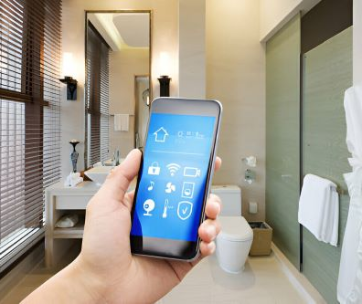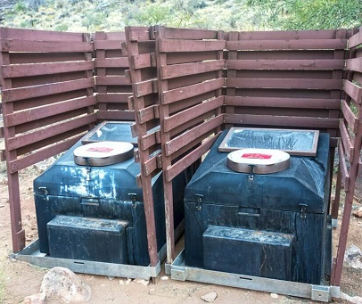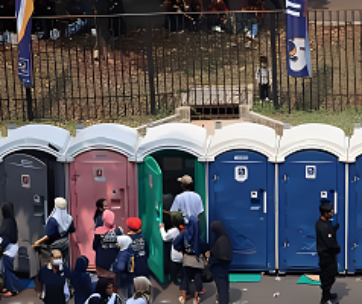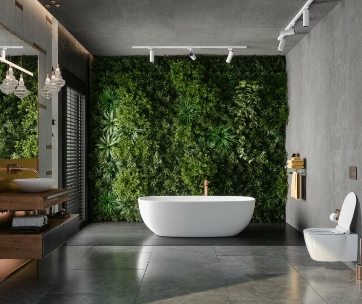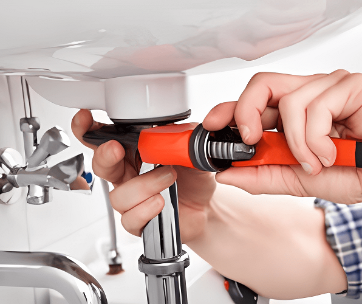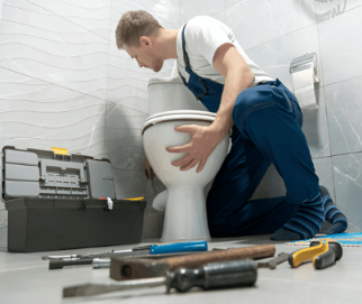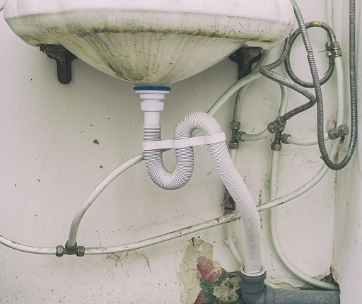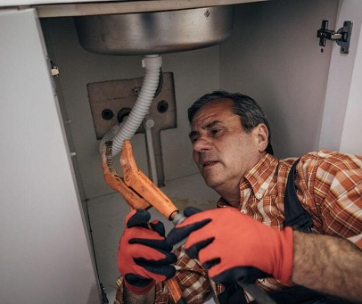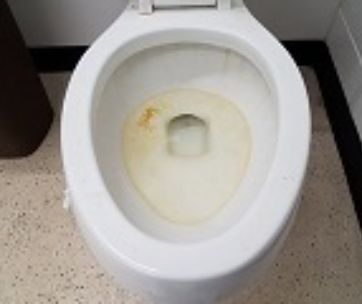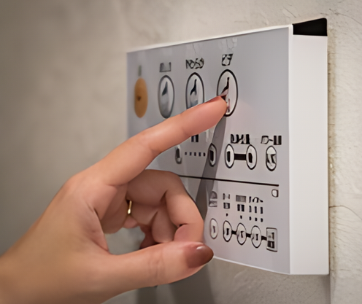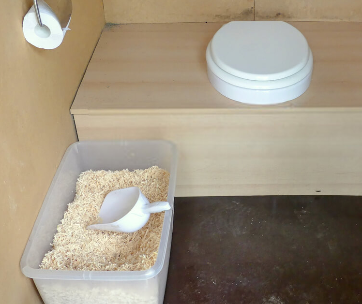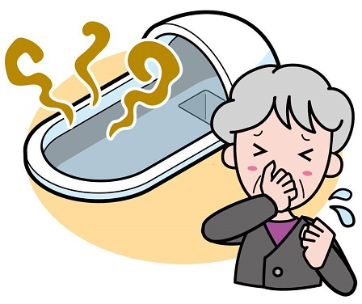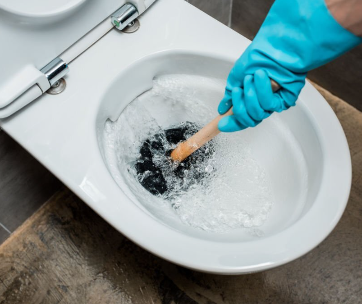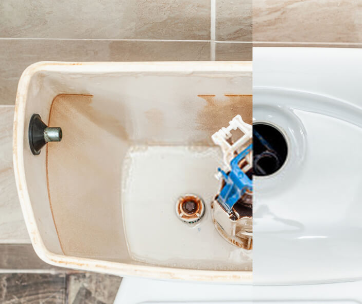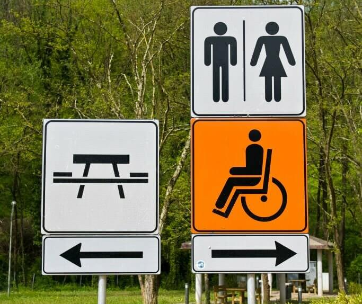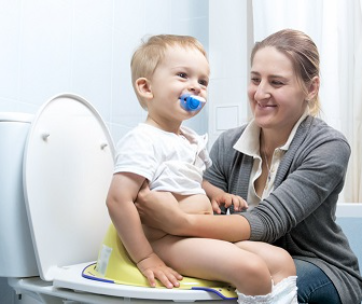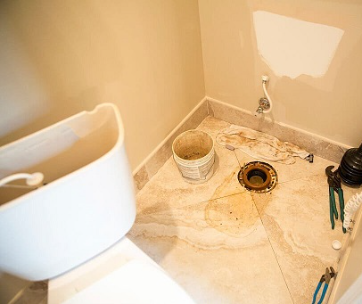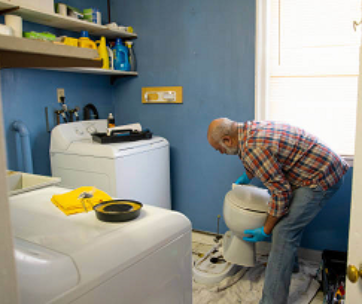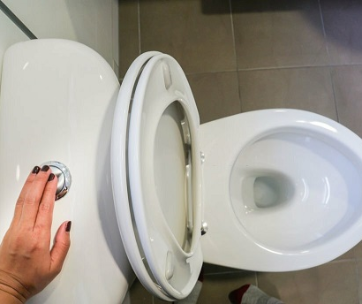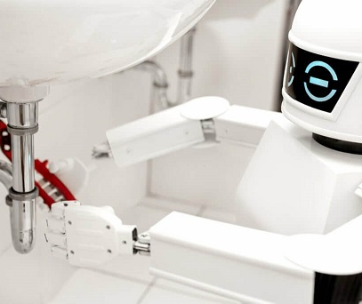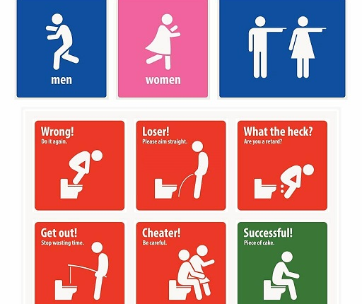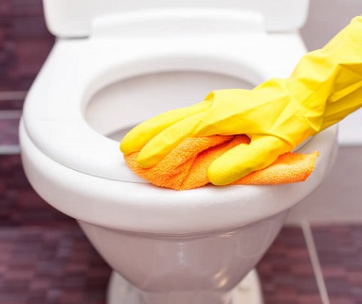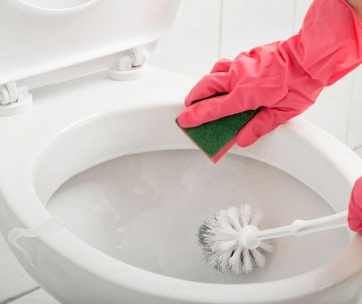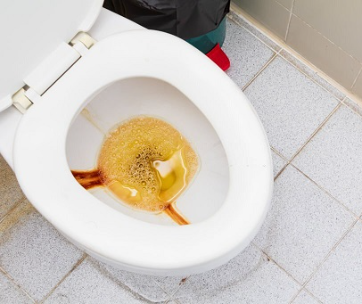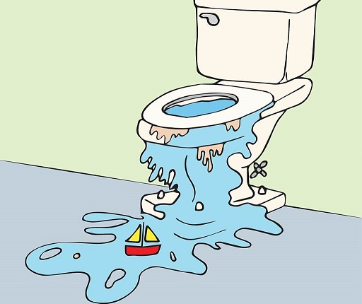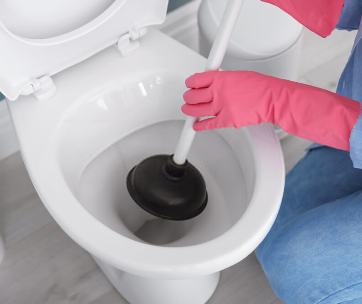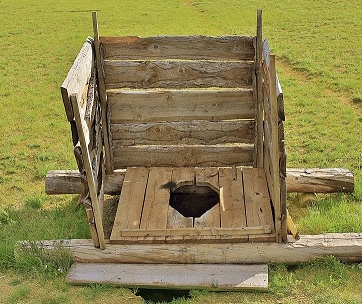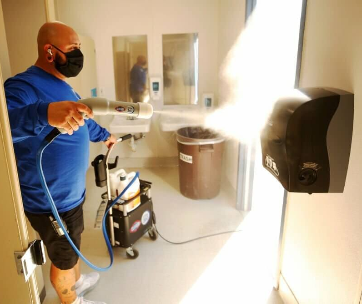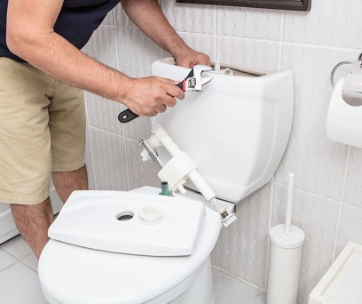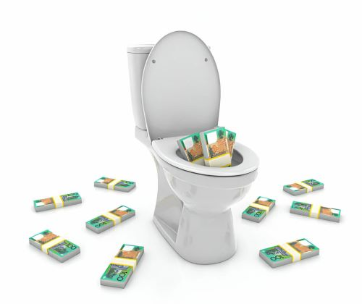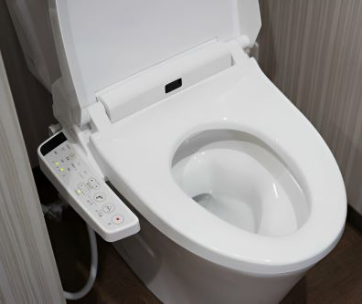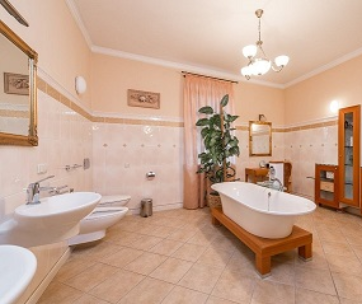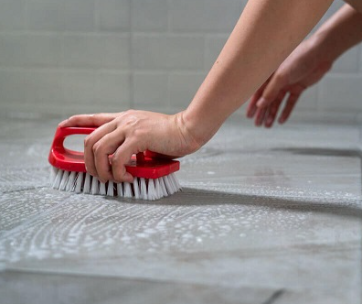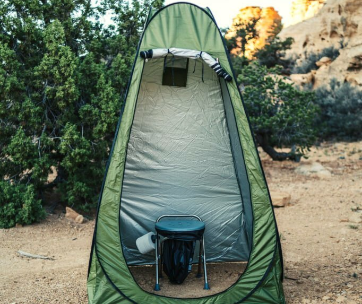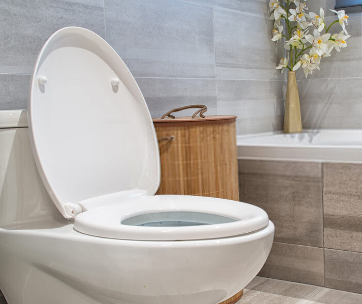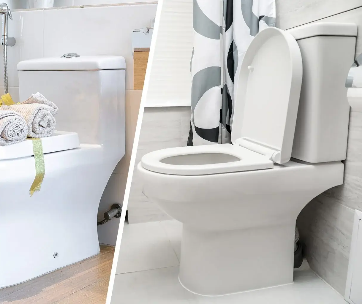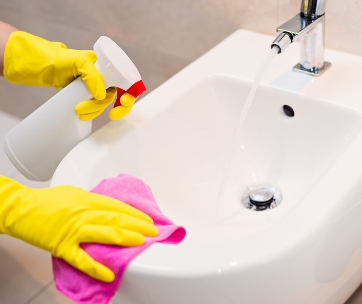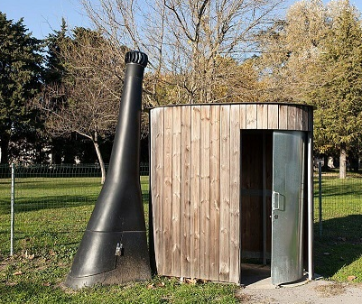There are a handful of toilet styles you can consider when remodeling or upgrading your bathroom. These majorly include standard floor-mounted toilets and wall-mounted toilets. Some good examples of floor-mounted toilets are such as the low-level toilet, close-coupled toilet, and back-to-wall toilet.
Wall-mounted toilets are usually the top picks for people looking for a modern and stylish option. The floating aesthetic is a major attraction for most design-forward and minimalist folk.
A wall-mounted toilet or a wall-hung toilet features a protruding bowl with the water tank, pipes, and fittings installed inside the wall. You may find wall-hung toilets with integrated cisterns just beneath the toilet bowl, but they are quite rare and expensive.
Beyond the unconventional shape, this type of toilet still flushes like a standard toilet by use of a siphon-action flushing mechanism.
Since we spend most of our lives in bathrooms—upwards of three hours per week for most adults—it’s only right that we pick the right toilet style for our needs. Let us take a deep dive into the positives and negatives of wall-mounted toilets as compared to standard toilets.
Pros of Wall-Mounted Toilets
If you don’t like the loud noise toilets make during flushing then you will love wall-mounted toilets. The in-wall installation of the water tank results in a quieter experience when the tank is refilling. But that’s not all, these types of toilets provide other benefits including the following:
Space-Saving and Modern Aesthetic
Wall-mounted toilets are a bathroom designer’s dream. They have a sleek finish, space-saving design, and all with the unsightly cistern hidden away. Additionally, the toilet’s floating design gives any bathroom a minimalist and modern aesthetic.
Unlike standard toilets, wall-hung toilets feature slim tanks that are mounted on strong cast iron or steel frames, which are in turn attached to wall studs. The protruding toilet bowl doesn’t touch the floor so your tile patterns are left seamless and unbroken.
Wall-mounted toilets free up about 10 to 15 inches of floor space, which can be used for other bathroom essentials such as sinks and appliances. For small bathrooms, the additional floor savings can go a long way in making the room look more open and comfortable.
Easy to Clean
Cleaning a standard floor-mounted toilet is always a pain for most people. The two-piece design provides plenty of unreachable nooks and crannies for dirt and dust to accumulate. With wall-hung toilets, that is simply not the case.
There are no obstructions on the floor so you can clean the bathroom floor and beneath the toilet bowl with ease. If you don’t mind paying a little more, features such as rimless toilet bowls and full-glazed trapways can make the whole cleaning process a breeze.
Full-glazed trapways are effective at minimizing clogs as the mirror-smooth surface allows for a near-frictionless passage of waste. However, be guided that unclogging a wall-mounted toilet is pretty much the same experience as with standard toilets.
Adjustable Height
Floor-mounted toilets mostly come in two height options: standard height and a slightly higher comfort alternative. A wall-hung toilet provides more customization as it can be installed at whichever height you prefer.
In a sense, wall-mounted toilets are built ADA-compliant making them more accessible for the elderly and those with disabilities.
The Americans with Disabilities (ADA) guidelines stipulate that an accessible toilet should be at least 17 to 19 inches off the floor. The height allows for easy transferring from a wheelchair seat, which is about 19 inches from the floor.
Wall-mounted toilets save plenty of floor space with their tanks tucked inside the wall. Plus, the height of the toilet seat can be adjusted at any point between 15 and 19 inches off the floor.
Cons of Wall-Mounted Toilets
Sitting on a wall-hung toilet – a baseless bowl shooting off the wall – can feel strange and unnerving at first. But that feeling quickly dissipates after using the toilet a couple of times. Some of the most notable drawbacks of wall-mounted toilets include high costs and complicated installations.
There are only a few companies and tradesmen who specialize in making and installing wall-mounted toilets. So, fewer choices and highly specialized labor make these types of toilets more expensive than standard floor-mounted ones.
Costlier
The costs of materials and installation for wall-mounted toilets are much much higher than those of standard toilets. In most cases, the parts of the toilet will be sold separately resulting in an incredibly high price tag.
It is not uncommon to buy the toilet seat, tank, and frame separately across different brands and companies. This results in a high price even before including comfort features. These include an elongated toilet seat, preferred color style, dual-flush system, foot warmers, heated seats, illuminated bowls, music connectivity, automatic lip openers, macerating functionality, and integrated dryers.
With all the parts available, installing a wall-hung toilet is a great endeavor that not only requires experienced bathroom installers but also more labor. Hiding the toilet cistern may necessitate expensive modifications to your bathroom walls and plumbing.
Back-to-wall toilets provide a similar experience at a more affordable overall cost but without the “levitation” aesthetic. They feature a modern design and have concealed cisterns pushed against the wall instead of inside the wall.
Complex Installation and Repairs
Installing a floor-mounted toilet is child’s play compared to mounting a wall-hung toilet. This type of toilet must maintain a standard weight limit of at least 500 pounds, which may be affected by factors such as the bowl construction, strength of the wall, and carrier frame.
Therefore, besides the sourcing of materials, a thicker wall, professional installation, and partial removal of the wall are all essential steps when installing wall-mounted toilets. While installing a floor-mounted toilet can be a one-man day job, wall-mounted toilets might take two or more days to be fully set.
In a nutshell, the installation process entails the following:
- Prepare the bathroom wall where the toilet is to be installed;
- Set up the carrier frame and mount it to the studs inside the wall;
- Connect the necessary plumbing and the toilet to the frame;
- Replace the cut-out wall over the in-wall toilet unit with drywall or relevant wall material;
- Test the wall-mounted toilet.
In regions that experience extreme cold, you want to avoid installing the in-wall unit to an exterior wall. Else, you will be risking frozen pipes and compromised plumbing.
On the bright side, wall-hung toilets are very flexible to install in terms of moving them from one location to the other. You don’t need to dig up the floor to add drainage as would be the case with floor-mounted toilets.
However, if your bathroom is not connected to your main plumbing system, or it is situated below your sewer line, then a macerating wall-hung toilet should be the ideal option. As a result, you will end up with a higher installation, operating, and maintenance bill.
Speaking of, maintenance can be slightly easier to perform due to the reduced points of failure, especially when the installation was well done. Most wall-hung toilets have access panels for quick fixes and repairs.
That said, some repairs and routine maintenance might require tearing down the section of the wall to access the cisterns and plumbing. Moreover, leakages can be harder to diagnose given the many hidden components.
Wall-hung toilets are prone to loosening over time given the immense pressure that is exerted on the carrier frame. Retightening the mounting bolts and nuts has been proven to solve this issue but it might mean partially tearing down the bathroom wall.
Over to You…
Perfect for cramped powder rooms and small bathrooms, wall-mounted toilets are slowly becoming a common feature in most homes. They are especially popular in Europe than in the United States.
To most people, this type of toilet is modern, stylish, and saves plenty of space in the bathroom. However, before committing to purchase a wall-hung toilet, make sure it’s the right choice for you. Bear in mind that this toilet will cost you more to install and repair, and it might mean tearing down a wall.
Feel free to seek out a professional plumber for advice. Else, a standard floor-mounted toilet will work just fine.



